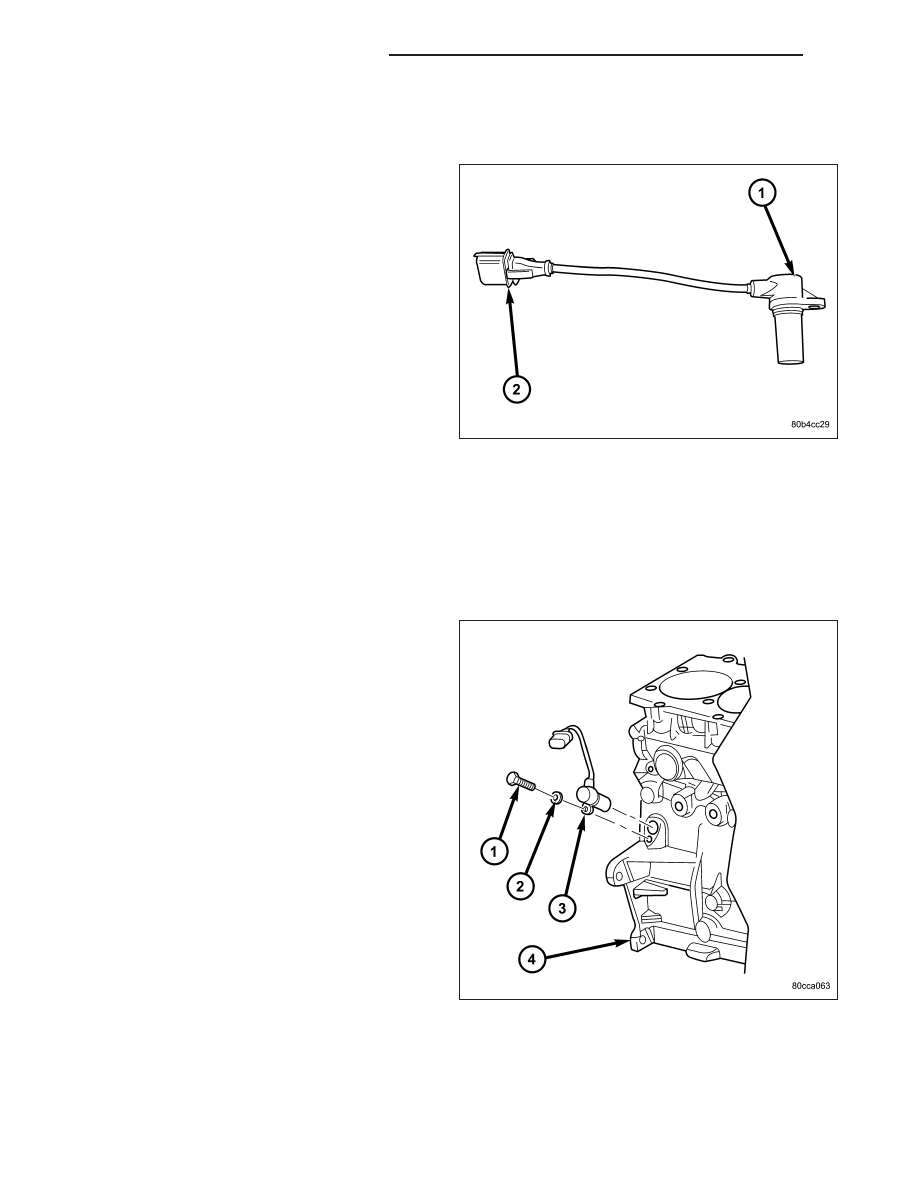Jeep Liberty KJ. Manual - part 971

CRANKSHAFT POSITION SENSOR
DESCRIPTION
The crankshaft position sensor (1) is mounted in the
right rear of the engine block, below the turbocharger,
behind a heat shield. This sensor is used to detect
engine speed.
OPERATION
The crankshaft position sensor is a magnetic pickup type sensor that generates an A/C signal. The sensor contains
a permanent magnet and a coil of wire. The sensor generates an A/C signal each time a notch in the reluctor wheel
on the crankshaft passes across the permanent magnet. The ECM calculates engine speed based on the frequency
of the A/C signal.
REMOVAL
1. Disconnect negative battery cable.
2. Raise vehicle on hoist.
3. Remove exhaust pipe to turbocharger down pipe
retaining bolts and lower exhaust pipe from turbo-
charger downpipe.
4. Disconnect crankshaft position sensor electrical
connector.
5. Remove the heat shield.
6. Remove crankshaft position sensor (3) retaining
bolt and remove sensor from engine block.
14 - 104
FUEL INJECTION - 2.8L DIESEL
KJ